It’s late. The workshop is quiet except for the occasional drip of resin slowly falling into the mold.
You lean in, watching colors swirl together like ink in water.
Each pour feels strangely personal—like creating something entirely new out of something ancient.
Epoxy woodworking has exploded across Instagram, Pinterest, and YouTube—river tables, glossy inlays, bold colors, and crystal-clear finishes.
The results are undeniably captivating, and it’s easy to see why so many woodworkers have embraced it.
Yet, as mesmerizing as epoxy can be, there’s a nagging feeling that you’re handling something not fully understood.
Beyond the hypnotic pours shared online, epoxy holds hidden challenges that aren’t always discussed openly.
In this post, I’ll walk you through 5 major hazards every woodworker should understand before starting an epoxy project – plus 2 bonus risks at the end that don’t get talked about enough.
1. Epoxy Can Be Toxic—Even If It Doesn’t Smell Like It
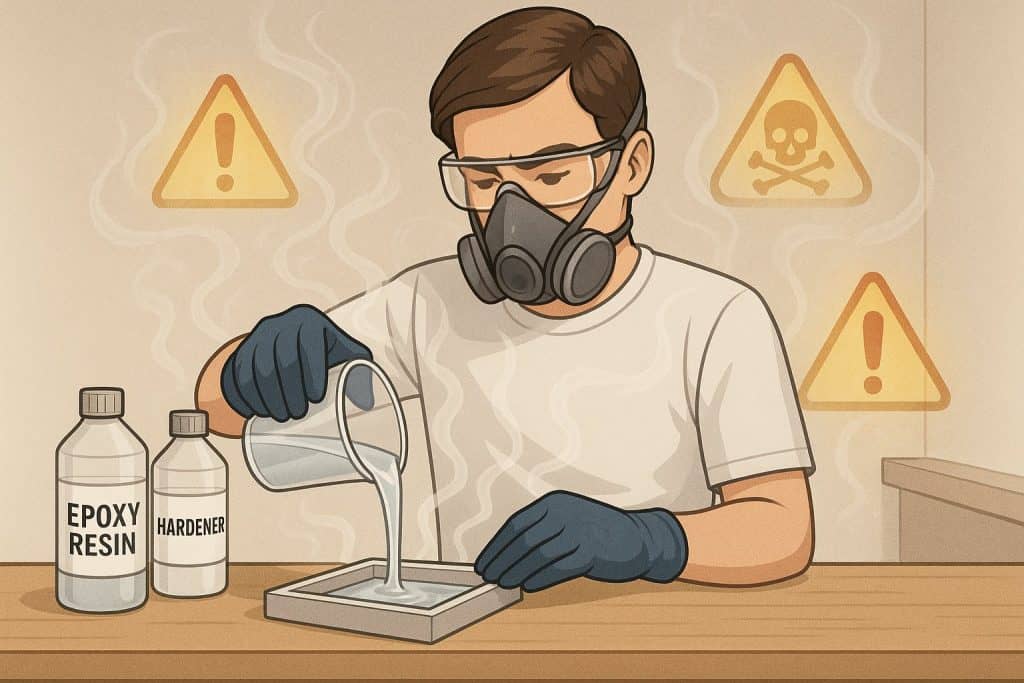
One of the biggest misconceptions is that if you can’t smell it, it must be safe. That’s not always true.
Many epoxies contain VOCs (volatile organic compounds) that can cause headaches, dizziness, or worse with prolonged exposure.
Even “low-odor” brands can release harmful vapors, especially during curing.
Respirators, gloves, and good ventilation aren’t optional—they’re essential.
And some hardeners or colorants can cause skin irritation even with brief contact.
Hazard:
Breathing in fumes or skin contact can lead to long-term health effects.
Watch out for:
Poor ventilation, mixing indoors without a mask, and using epoxy without reading the safety data sheet.
2. It Can Crack or Yellow Over Time
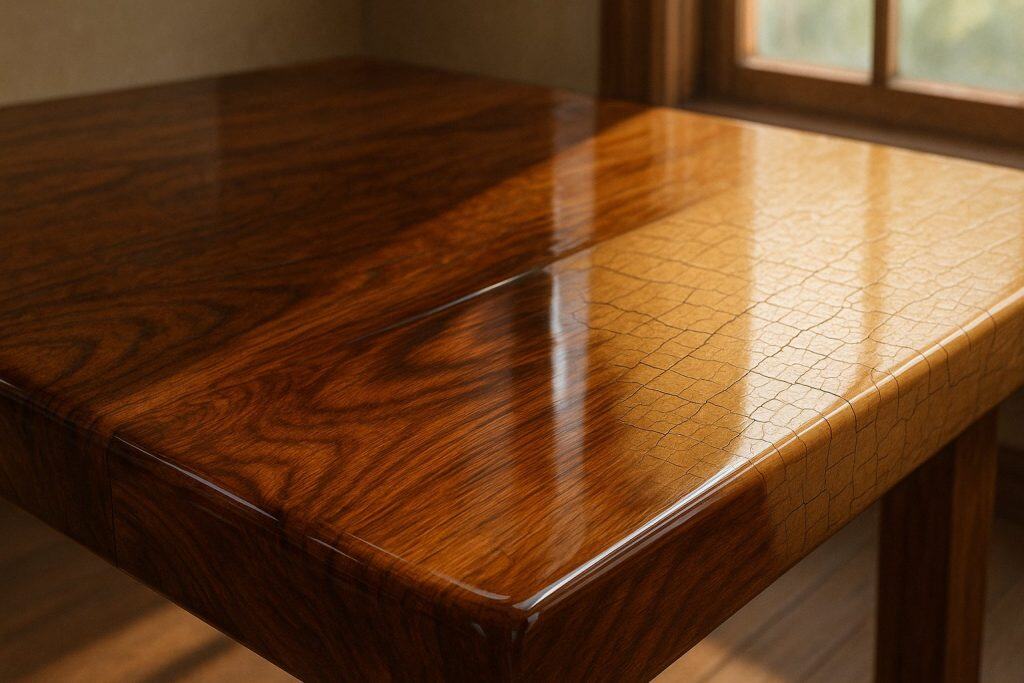
Epoxy looks great when it’s fresh, but that finish isn’t always permanent. In sunny rooms or outdoor projects, UV light can cause the resin to yellow or even break down.
And in cold temps, it may shrink or become brittle.
Some premium resins include UV stabilizers, but even those aren’t bulletproof.
And if you pour it too thick or don’t mix it correctly, you might end up with hairline cracks, bubbles, or a cloudy finish down the road.
Hazard:
Projects that look perfect now could fail or fade over time.
Watch out for:
Cheap resin, poor mixing technique, or using epoxy where wood movement is likely.
3. It’s Expensive—And Not Just the Resin
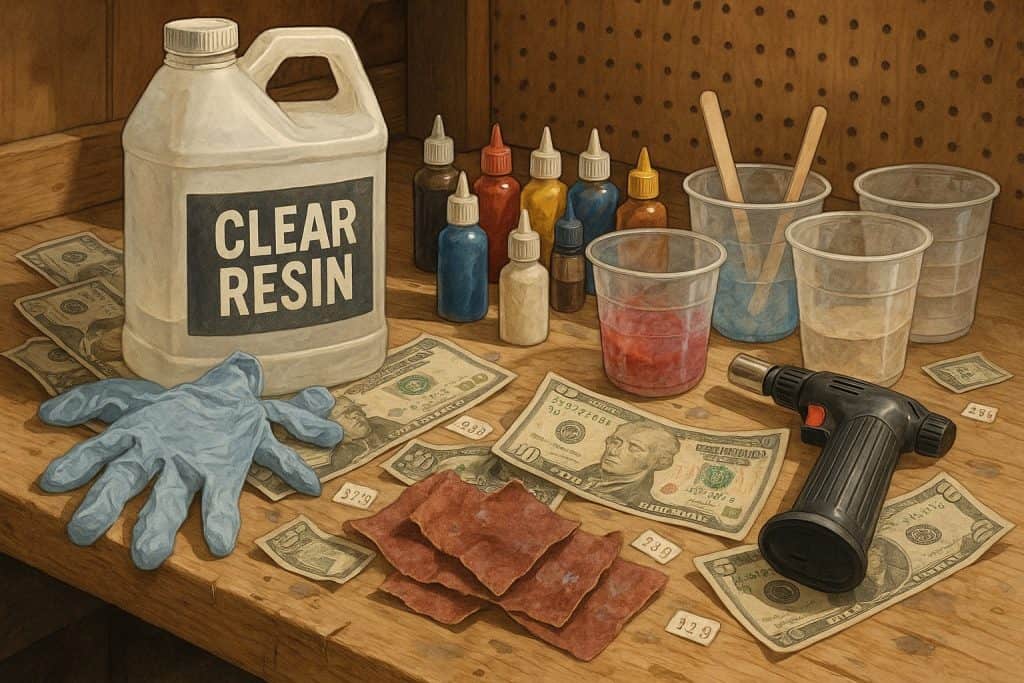
A gallon kit of quality epoxy can run $80–$120 or more. But that’s just the start.
You’ll also need mixing containers, pigment dyes, spreaders, gloves, torches, sanding pads, finishing oils, and sometimes mold materials if you’re casting.
Costs can rise quickly, especially if a pour goes wrong and you have to redo it.
And since epoxy is a one-time-use material, there’s no salvaging leftover hardened resin once it’s cured.
Hazard:
Projects can become more costly than expected once you factor in all the extras.
Watch out for:
Underestimating resin volume, waste from test pours, and needing specialty tools for finishing.
4. Fixing Mistakes Isn’t Easy
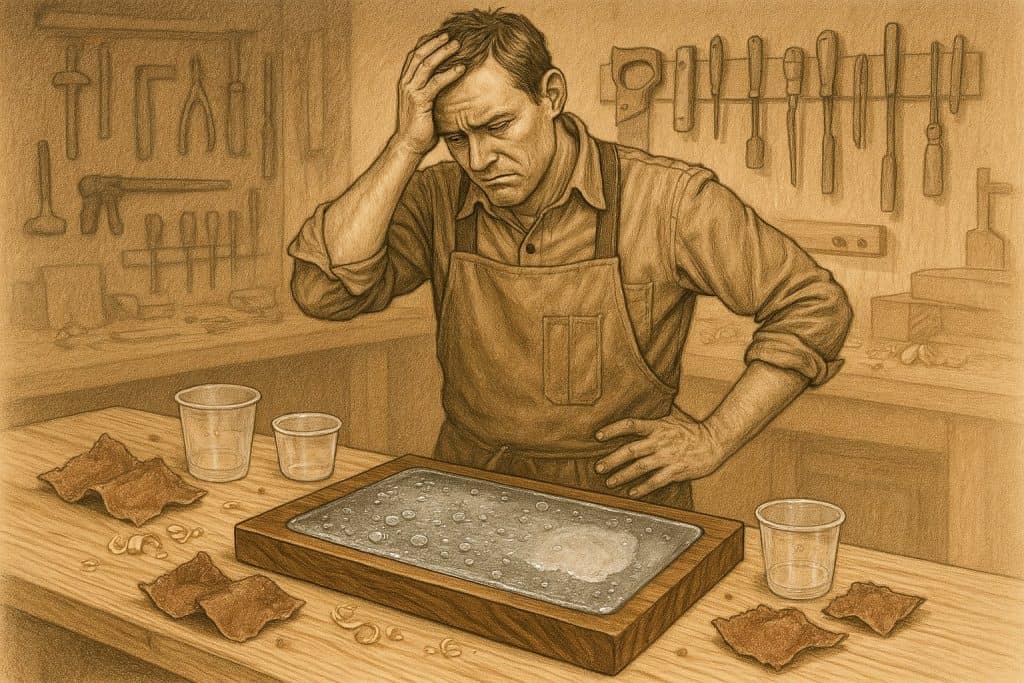
Made a mistake during a traditional wood build? You can usually sand it down, re-cut, or patch it.
With epoxy, a bad pour often means starting over.
If the mix ratio is off or bubbles cure into the surface, you may be stuck with a sticky mess.
And sanding epoxy to fix issues is time-consuming and can release fine dust that’s harmful to breathe.
Hazard:
Simple errors can ruin the whole piece—and there’s no quick fix.
Watch out for:
Improper mixing, rushing the pour, and skipping test batches.
5. Cleanup, Waste, and Environmental Impact Are Bigger Than You Think
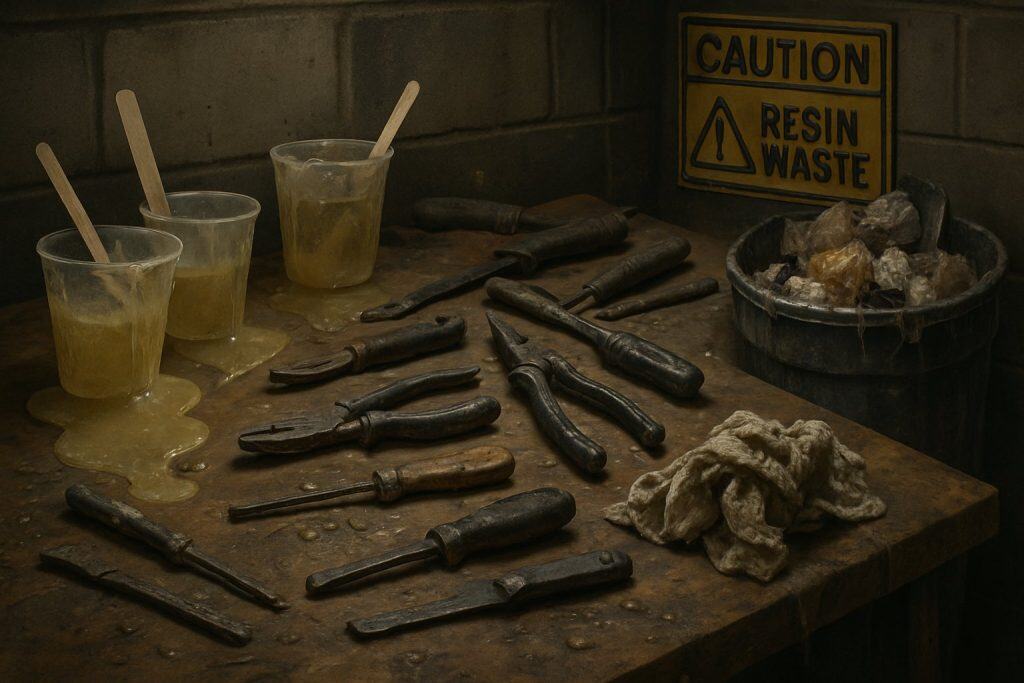
Epoxy isn’t just tricky to work with—it’s also messy. Spills can ruin floors, clothes, or tools if not handled immediately.
And once it cures, there’s no dissolving it.
The hardened resin is essentially plastic, and there’s no practical way to recycle it.
Worse, many DIYers don’t realize that uncured resin or rinse water containing resin residue shouldn’t go down the drain.
Improper disposal can be harmful to water systems and soil.
That makes responsible cleanup more of a chore than most expect.
Hazard:
Poor cleanup and disposal practices can create lasting messes—or worse, environmental harm.
Watch out for:
Pouring waste down the drain, tossing uncured resin, and failing to contain spills early.
Bonus Hazard #6: Dust and Debris Stick Like Magnets
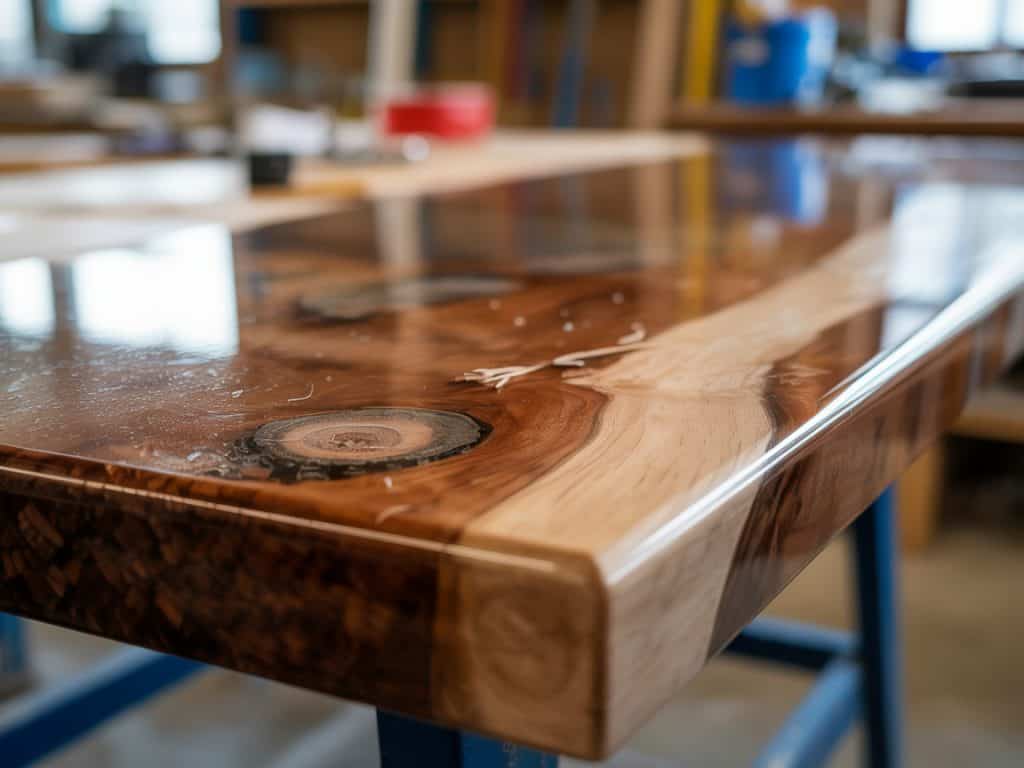
Fresh epoxy might look smooth and perfect at first, but during curing it attracts dust, hair, and other tiny particles from the air.
Even the cleanest workshop has debris floating around, and once it lands in the resin, it’s locked in permanently.
What started as a flawless surface can end up with specks, fibers, or cloudy spots that distract from the finish.
And unlike wood, you can’t just sand out the imperfections without risking more damage.
Hazard:
Small airborne particles can permanently mar the glossy finish you worked so hard for.
Watch out for:
Pouring epoxy in a space without dust control, sanding nearby while it cures, or leaving projects uncovered for hours. A simple plastic tent or dust cover can make all the difference.
Bonus Hazard #7: Leaks Can Turn Into a Sticky Disaster
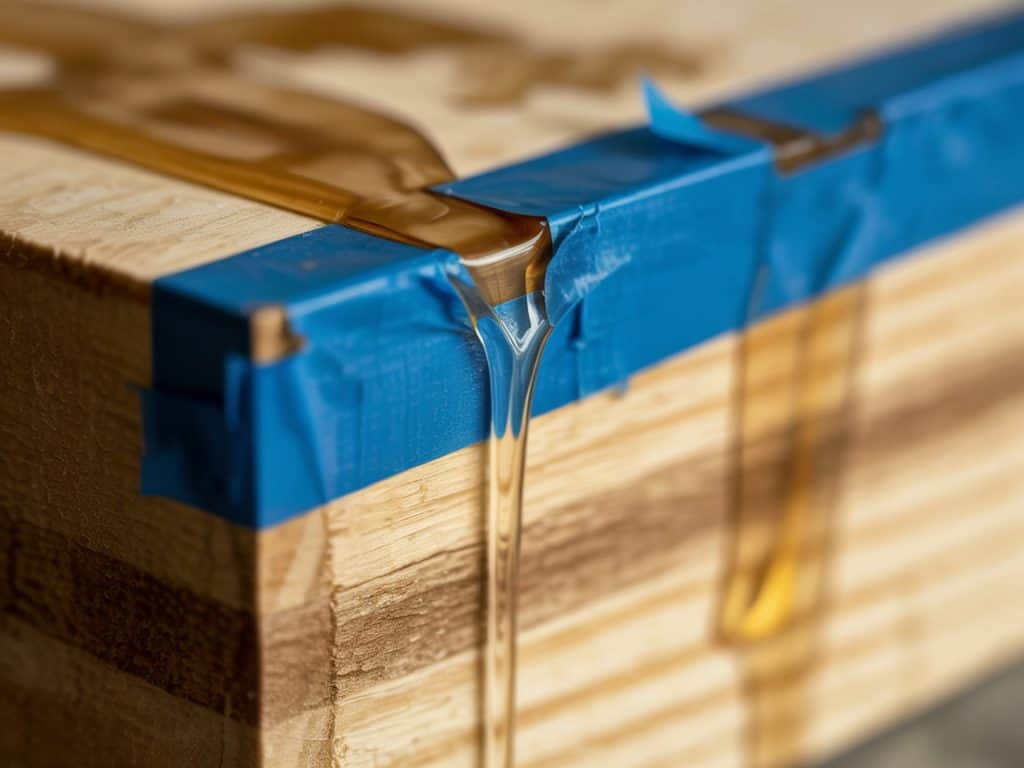
Anyone that has worked with epoxy has experienced a leak. It’s zero fun.
Epoxy is thin and runny before it begins to cure, which means it will find any crack, seam, or gap in your mold or project.
Even a pinhole can slowly drain resin onto your bench or floor, leaving you with wasted material and a sticky mess that’s almost impossible to remove once it hardens.
Leaks don’t just make cleanup harder—they can ruin the entire project.
A table mold that isn’t sealed properly may leave you with uneven edges, empty voids, or resin fused to your work surface.
Hazard:
Poor preparation can cause an entire pour to fail, wasting both time and expensive resin.
Watch out for:
Skipping a thorough seal check, relying only on tape to hold molds together, or not testing with a small amount before a full pour. Taking time to prep the area well will save you frustration later.
Tips to Work With Epoxy Safely
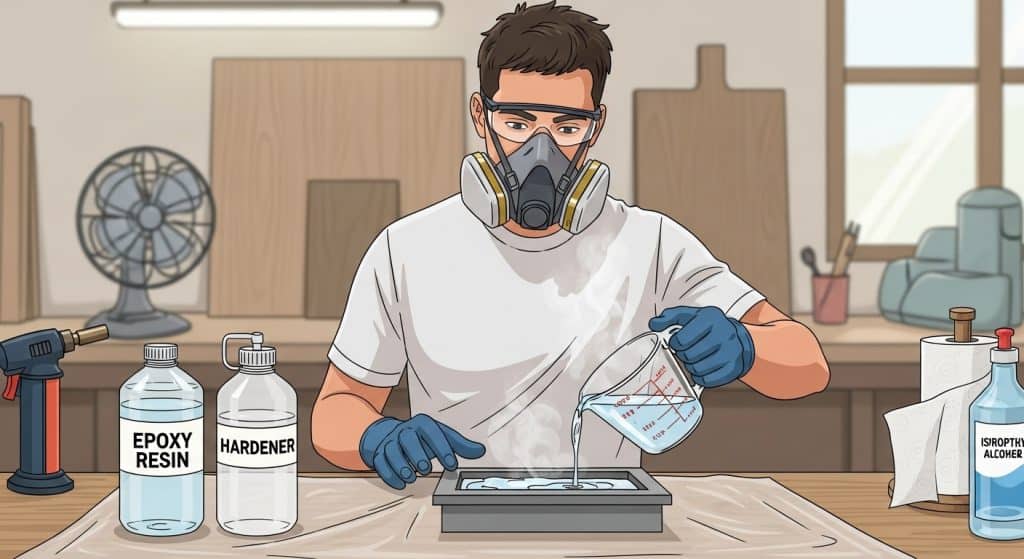
If you’re set on using epoxy, following a few key precautions can go a long way toward protecting yourself, your wallet, and your final project.
1. Wear proper safety gear every time.
Use nitrile gloves, safety glasses, and a NIOSH-approved respirator—even if the epoxy says “low odor” or “non-toxic.”
2. Work in a well-ventilated area.
Open windows, use fans, or set up a fume extractor.
Avoid working in small, enclosed spaces without airflow.
3. Mix accurately and thoroughly.
Follow the manufacturer’s recommended ratios (often 1:1 or 2:1 by volume), and stir slowly to avoid bubbles.
Use separate measuring tools for each part.
4. Do a small test pour first.
Before going all-in on a big project, test your resin, hardener, pigment, and mold with a small sample to see how it cures.
5. Use heat carefully to remove bubbles.
A quick pass with a heat gun or torch can help pop surface bubbles—but don’t overdo it, or you’ll scorch the resin or introduce new issues.
6. Plan your cleanup before you start.
Lay down a plastic drop cloth.
Have isopropyl alcohol and paper towels ready for spills before they cure. Never pour leftover resin down the drain.
7. Dispose of materials responsibly.
Uncured epoxy is hazardous waste.
Let it fully cure before disposal, and check local regulations for proper handling.
Should You Avoid Epoxy?
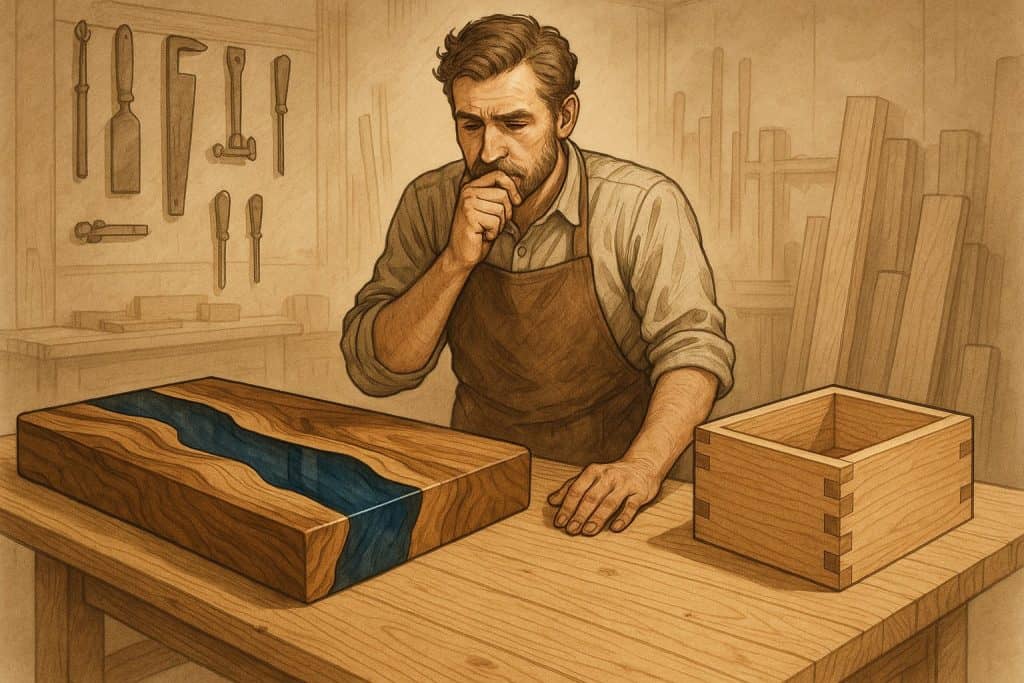
Not at all—but you should go into it with clear eyes.
Epoxy is a powerful tool with a unique look. But it comes with trade-offs, and it’s not for everyone.
If you try it, start small, read the labels, and focus on safety first.
Whether you love the glassy finish or prefer the feel of raw wood and hand-cut joints, woodworking is still about building something with your hands.
Epoxy or not.
